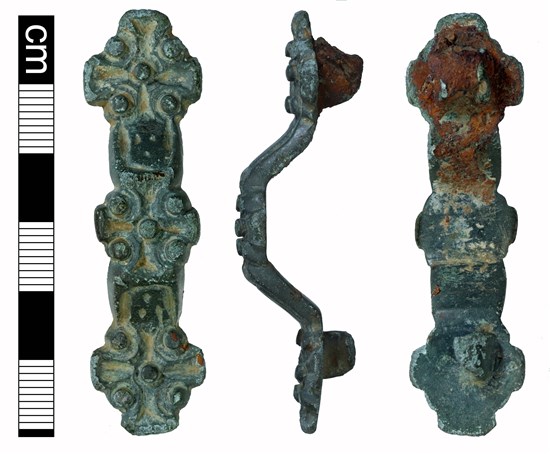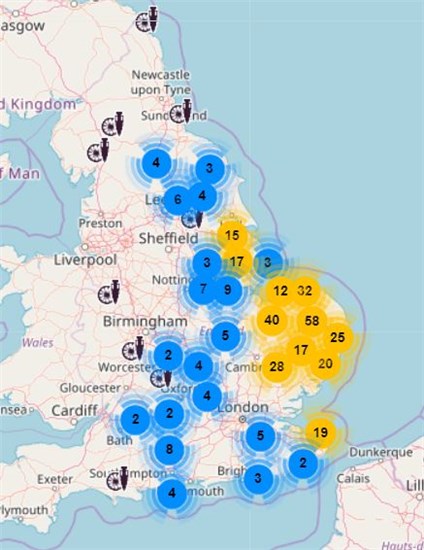Our chosen find this month is a middle to late Saxon copper-alloy bow brooch. It was found recently on farmland in Breckland and is notable because of its size, richly cast decoration, and excellent level of preservation. It never ceases to amaze that an object can spend well over a 1000 years in the ground, be subjected to the vagaries of the weather, chemical fertilizers and ploughing and still survive in relatively good condition. Not so for the iron spring and pin mechanism though, as the rusty concretion on the back bears witness to the original location. Iron corrodes much more readily than copper alloy in the ground.


The date of the brooch is circa AD 800-910 and it is of a brooch form now described as Ansate. The term Ansate means ‘handle-shaped’ and it is clear how the brooch style got it's name. The adjacent distribution map uses national data from the Portable Antiquities Scheme (PAS) database and illustrates that the type was particularly popular in Anglo Saxon East Anglia. Full details of the brooch can be found at https://finds.org.uk/database using the reference NMS-EB5046 in the search field.